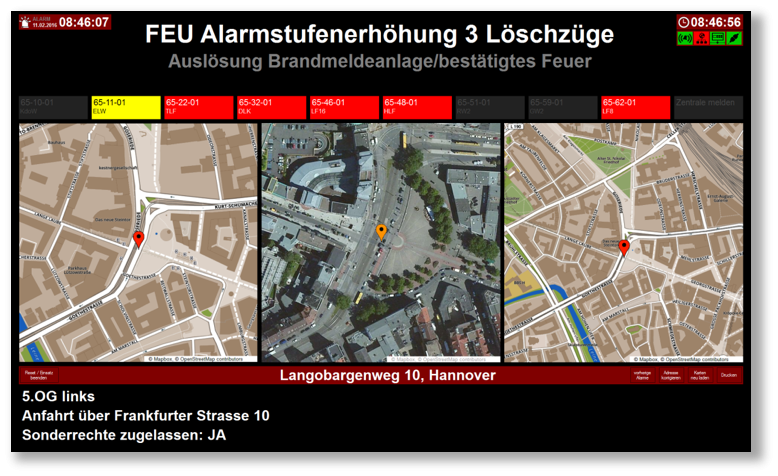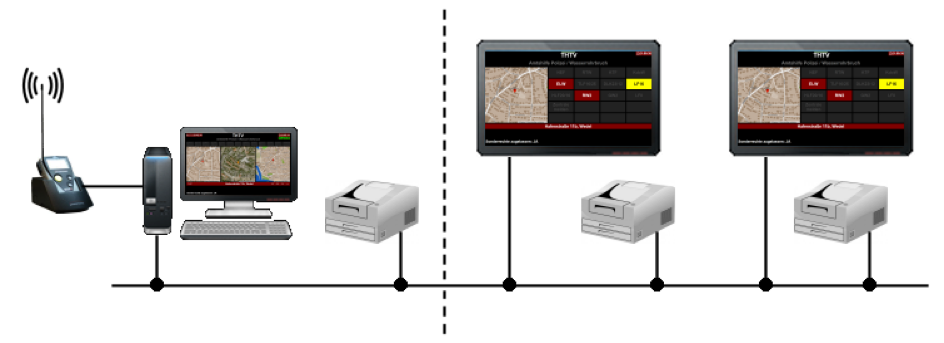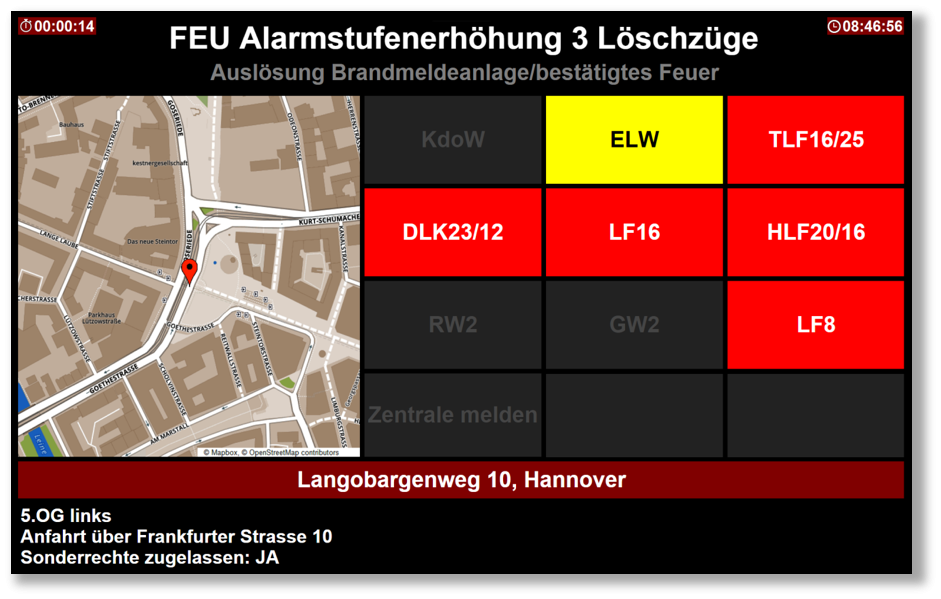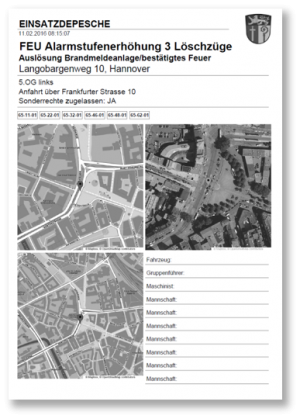News
15.02.2016
Eurocommand Dispatch Monitor
Eurocommand has developed a software solution to support personnel at the command center in coordinating units after an alarm with response action: The Eurocommand dispatch monitor.

The Eurocommand dispatch monitor provides the forces that are responding or standing by with additional information concerning the involved units’ stati. Additionally, the command center receives this information either in the form of printed operation dispatches or digitally via hall monitors.
The Eurocommand dispatch monitor automatically processes alarm messages received via a connected digital message receiver on a Windows PC. If an internet connection is in place, street and satellite maps are downloaded for a given address. If maps and coordinates have already been downloaded for an address or area due to a previous operation, then an internet connection is not necessary.
The maps, the message text and the units reserved for the operation’s key word in the alarm and response system are shown to the personnel at the command center in the dispatch monitor’s main program. Here, the address or the responding vehicles can be changed. Manually entering an operation, for example during a severe emergency, is also possible.
Operation dispatches can be sent to up to 3 printers in an individually definable quantity. The printouts contain the alarm message as well as map sections that assist in locating the operation site. Individually identified POI’s such as hydrants can also be superimposed on the maps.
Further monitors, which can be cost-effectively connected to the existing network via mini-computers, use web-browser technology to give the responding forces important information about the operation and the units being deployed while they are in the locker room or the vehicle hall.
Your advantages at a glance:
· Simple use of digital message receivers
· Position selection of the command center’s PC display when operating multiple monitors
· Online and offline maps to aid in finding the operation site
· Dispatch monitors for local, regional, and object-related operation scenarios
· Vehicle database with group-related response sequence
· Manual entry of operations, for example during major emergencies
· Sending operational dispatches to up to three printers
· Superimposing POIs on maps using layering
· Integrated web server for cost-effective replication of operation information on multiple monitors
· Adjustable layouts for web site display on multiple monitors
Interface to CommandX; interface to programmable logic controllers.
And this is how it works:



© eurocommand 2015 · all rights reserved · imprint · disclaimer · Data protection




